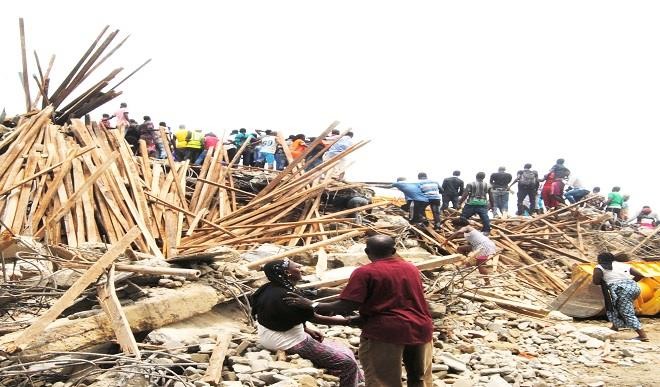The notorious incidences of Gwarinpa building collapse
Building collapse is a cankerworm bedeviling property developments generally, not only in Abuja. But, the frequency of its occurrence in the Gwarinpa Housing Estate relative to the entire City is something else. The Gwarinpa Housing Estate constitutes only two of the developed districts out of at least thirty in the Abuja City development plan. These […]


Building collapse is a cankerworm bedeviling property developments generally, not only in Abuja. But, the frequency of its occurrence in the Gwarinpa Housing Estate relative to the entire City is something else. The Gwarinpa Housing Estate constitutes only two of the developed districts out of at least thirty in the Abuja City development plan. These are Bunkoro and Wupa Districts in the Phase III.
In October 2009 there was building collapse at the Gwarinpa Estate, which was attributed to structural failure. February 2012 was a period when another building collapsed in the same Gwarinpa, and was attributed to the developer’s refusal to respect the stop work order served by the FHA staff, including marking the structure which accompanied the enforcement order. Yet on the 29th of August 2016 at the same Gwarinpa Housing Estate there was building collapse which claimed 4 lives according to the last report received. The same recurrent reason of disrespect to the enforcement notices served to the developer was again attributed as the cause of the latest collapse.
There are different Authorities in charge of controlling developments. While Development Control of the Gwarinpa Housing Estate is handled by the Federal Housing Authority (FHA), the remaining districts of the entire City is under the AMMC. For the fact that incidences of building collapse is less frequent in the larger area under the AMMC, than the small entity under the control of the FHA, indicates that development control activities under the AMMC is more effective than that of the FHA. Thus, the first step of curbing the Gwarinpa building collapse recurrent incidences is that, the FHA must learn from AMMC, on how the AMMC is able to effectively mitigate the incidences of building collapse in the entire City, against its only two districts.
Whenever there is any incidence, the FCT administration always makes the statement that it shall investigate the cause of the collapse in order to forestall future occurrence. For the Gwarinpa Estate, even if it investigates, it cannot implement, because, it has ceded the power of enforcement of development control to another Authority. Certainly the FHA lacks the sophisticated machines for the control of development in a beehive like that of Abuja.
Whatever this column observed 5 years ago after a similar incidence, but less devastating than the recent, is still relevant. From that time to date, more housing units were added, certainly, requiring more personnel and equipment for controlling development in order to overcome the increasing challenges.
It is necessary to state here that as much as the improvements made in the area of addressing prevailing challenges by the Development Control Department of the AMMC, should also be emulated by the FHA by its Development Control Department. Developers have the tendencies of disobeying constituted authorities, unless they are sure that there is the wherewithal to impose punitive measures. Certainly, the recalcitrant developers in Gwarinpa have not seen the teeth to bite them from the FHA if they contravene, as such, they are bound to dismiss whatever order that is being served, leading to the dire consequences. Would these have happened if the enforcement notices were issued by the AMMC Development Control?
Meanwhile, our further scrutiny revealed that the land use for the area is for open space recreation, not the type of multi-storey development under construction. If purpose clause for the allocation is contrary to what is being implemented, and for the development to be allowed all these while, up to reaching such advanced level before the collapse, whatever reason advanced by the FHA for the developer’s disrespect for enforcement notice is not tenable.
The URP Law vests development control on the local authority, courtesy of a Supreme Court judgment. For Abuja, the responsibility is squarely on the AMMC. Also, in the prevailing circumstances, it is the AMMC that has the wherewithal to force developers to respect enforcement order aimed at arresting such disastrous consequences. We would suggest that the AMMC should take over the control of development in the Gwarinpa. This means, the issue of who allocates plot there should also be reviewed.
